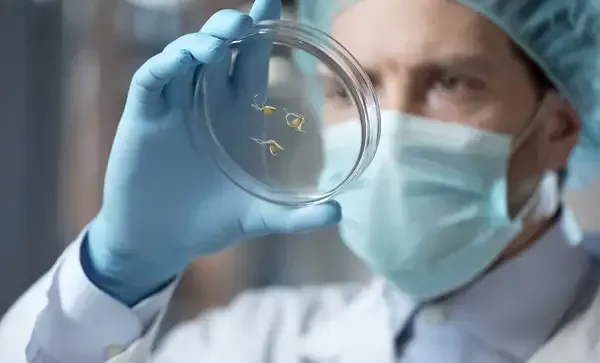- Home >
- Science
- > Innovation
When Were the First GMOs Developed?
The development of genetically modified organisms (GMOs) began in the early 1970s. Scientists first manipulated DNA to create recombinant DNA, which led to the creation of the first GMO bacterium in 1973 by Herbert Boyer and Stanley Cohen. This breakthrough paved the way for advancements in genetic engineering. The first genetically modified plant was produced in 1983, and by the 1990s, GMOs had made their way into commercial agriculture, with the introduction of crops like herbicide-resistant soybeans and pest-resistant corn.

Understanding the Origins of GMOs
Genetically Modified Organisms (GMOs) have become a significant subject of discussion in agriculture, food safety, and environmental impact. To comprehend when the first GMOs were developed, we must explore the historical context and technological advancements that led to their creation. GMOs are organisms whose genetic material has been altered using genetic engineering techniques. These modifications can result in crops that are resistant to pests, diseases, or environmental conditions, which can potentially enhance food security.
Early Developments in Genetic Engineering
The journey of genetic modification began long before modern techniques were developed. The concept of manipulating an organism's genetic material dates back to ancient agriculture, where selective breeding was used to enhance desirable traits in plants and animals. However, the first significant steps toward modern GMOs occurred in the mid-20th century.
In the 1970s, scientists began to develop techniques that allowed for the direct alteration of an organism's DNA. The discovery of restriction enzymes and recombinant DNA technology laid the foundation for genetic engineering. These innovations enabled researchers to cut and splice DNA from different organisms, creating new genetic combinations that would not occur naturally.
The Birth of Modern GMOs
The first true GMO was created in 1973 when researchers Herbert Boyer and Stanley Cohen successfully inserted a gene from a jellyfish into a bacterium, resulting in a genetically modified strain of Escherichia coli (E. coli). This groundbreaking experiment demonstrated the potential for genetic engineering in altering an organism’s characteristics.
Following this pioneering work, the first genetically modified plant was developed in 1983. Scientists at the University of California, Davis, introduced a gene from the 'bacterium' Agrobacterium tumefaciens into a tobacco plant, allowing the plant to produce a protein that made it resistant to herbicides. This research marked a significant milestone in the field of agricultural biotechnology.
Commercialization of GMOs
The first commercially available GMO crop was the Flavr Savr tomato, which was introduced in 1994. Developed by Calgene, this tomato was engineered to have a longer shelf life by delaying the ripening process. The Flavr Savr tomato was a pivotal moment in the GMO landscape, as it brought the concept of genetically modified food to consumers.
Since then, the commercialization of GMOs has expanded rapidly. The 1990s saw the introduction of several other genetically modified crops, including
| Year | Crop | Traits |
|---|---|---|
| 1996 | Corn | Insect resistance |
| 1997 | Soybean | Herbicide tolerance |
| 1998 | Cotton | Insect resistance and herbicide tolerance |
These crops were engineered to resist pests and tolerate herbicides, ultimately leading to increased yields and reduced reliance on chemical pesticides. The introduction of these GMOs sparked both enthusiasm and concern among consumers, farmers, and environmentalists.
Global Adoption and Regulation
By the early 2000s, the adoption of GMOs had grown significantly worldwide. Countries such as the United States, Brazil, and Argentina became major producers of genetically modified crops. The widespread use of GMOs raised questions regarding their safety, environmental impact, and ethical implications.
Regulatory frameworks were established in various countries to assess the safety of GMOs before they could be released into the market. The United States, for example, adopted a voluntary system for regulating GMOs, while the European Union implemented stricter regulations, requiring extensive testing and labeling of genetically modified foods.
The Future of GMOs
As we look to the future, the development of GMOs continues to evolve. Advances in gene editing technologies, such as CRISPR, have revolutionized the field, allowing for more precise modifications without introducing foreign DNA. This has paved the way for creating crops that are not only resistant to pests and diseases but also have enhanced nutritional profiles and improved resilience to climate change.
As public perception of GMOs continues to shift, ongoing research and dialogue are crucial for understanding the potential benefits and risks associated with genetically modified organisms. The timeline of GMO development illustrates a remarkable journey of innovation, highlighting the balance between advancing agricultural practices and addressing consumer concerns.
Conclusion
In summary, the development of GMOs has a rich history that began with basic genetic manipulation techniques in ancient agriculture. The modern era of GMOs started in the 1970s with the advent of recombinant DNA technology, leading to the first genetically modified plants in the 1980s and the commercialization of GMO crops in the 1990s. As we move forward, the ongoing advancements in genetic engineering will continue to shape the future of agriculture and food production, making it essential for stakeholders to stay informed about the developments in this dynamic field.












